Introducing Decision Table Comparison
Have you ever been in the middle of creating something new and suddenly needed to refer back to an earlier version? Unfortunately, switching between versions can disrupt your workflow. But what if I told you there's a seamless solution which allows you to effortlessly create decision tables and access previous versions, all in one smooth process? Get ready to explore Decision Table Comparison!


Intro to comparison
Comparing Decision Tables enables you to compare any two of tables, even those you have just imported into your space. However, you will find the greatest benefit in comparing the new version you are creating with the current one. This is especially the case for large rules, which can have hundreds of rows, where errors are more likely to occur.
The comparison is accessible in a number of places, such as the folder structure, the list of business rules, and the settings of the rule itself. It's available wherever your rules are, so it's always at your fingertips.
Once opened, you can see the differences between the tables thanks to the color differentiation. The statistics are a useful indicator for summarizing the number of differences between the tables. Use the arrow buttons to navigate through all of the differences.
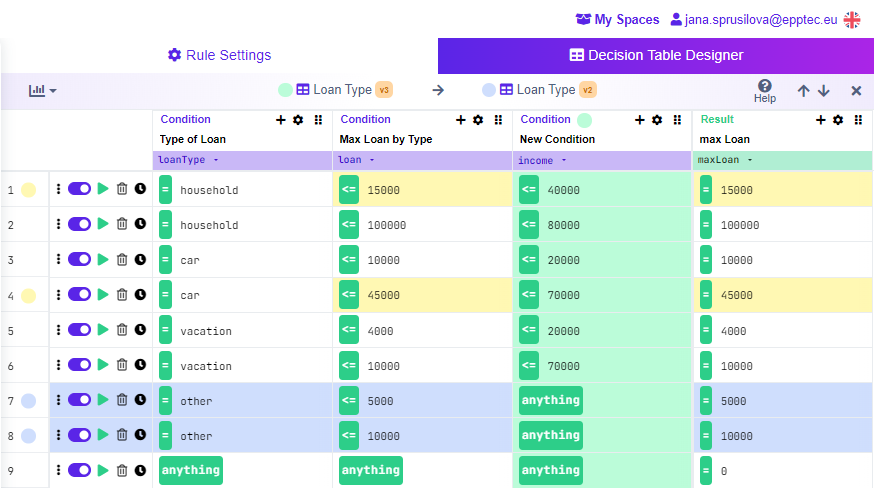
With a few clicks, you can simply add whole rows and columns from the table you are comparing with. This way you can easily migrate parts of tables between each other without using an external tool.
Comparison doesn't stop you from creating a decision table. You can still edit your table while you are comparing. Just keep working on your rule, watch the changes in real time and discover a seamless workflow for crafting and perfecting tables.
How does it work?
Simply select your tables for comparison
Imagine you have a decision table that evaluates loan approval based on criteria such as the purpose of the loan. Of course, the criteria can change over time and therefore you need to implement such changes into your business rules. Versioning your business rules in the DecisionRules application makes such implementation easier.
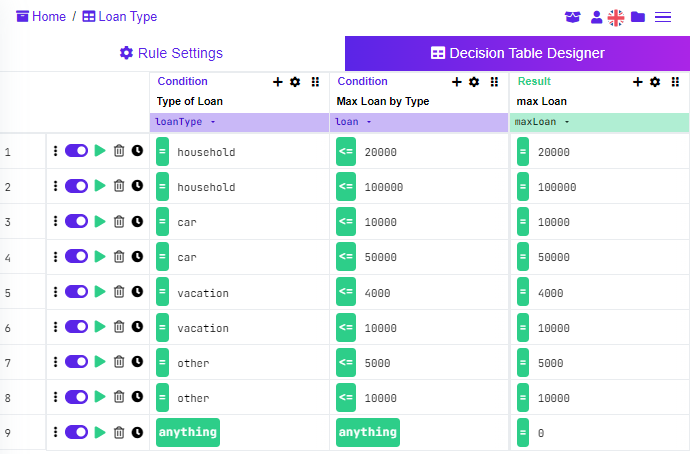
In this case, the loan approval is now also evaluated based on household income. Such a condition will need to be entered as a new condition into the decision table. Furthermore, there is no longer an “other” loan type. Therefore, the condition value “other” in the loan type will no longer be present in the new version of our decision table.
Consequently, there have been some minor changes to the maximum amount values for which a loan can be arranged.
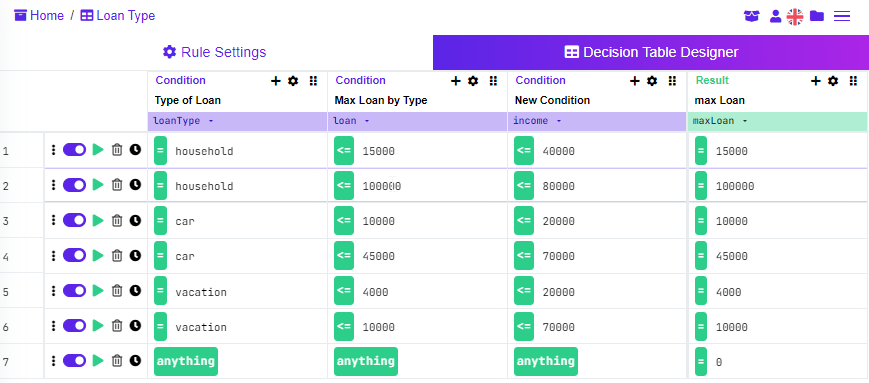
Let's take a look at how a comparison of our two versions of the decision tables will look like based on the previously mentioned changes. First, we'll open the comparison by clicking on the Compare button
.gif)
Review differences using our great comparison view and color system
The comparison mode looks very similar to the familiar decision table editor. Apart from the visible Comparison Bar, where we can find the names of the tables to be compared (1), the controls and the comparison help (2), statistics (3); we can see the color differentiation of the differences between our two tables.
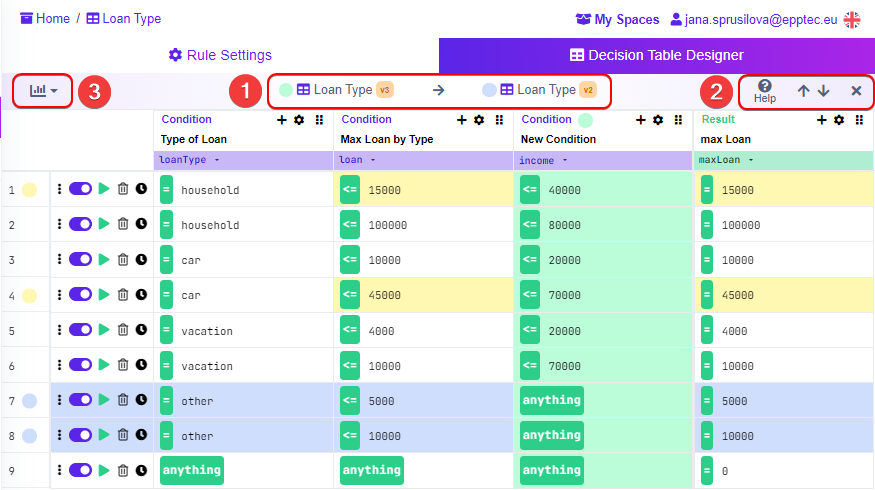
A newly created version and, therefore, a table that we compare with another table; let's call it the Original Table, is marked in green.Thus, any entire columns or rows that occur only in the Original table will be marked in green. In the picture, we can see that the newly added condition "income" in the form of a column is shown in green - this column is therefore only in our new version of the decision table.
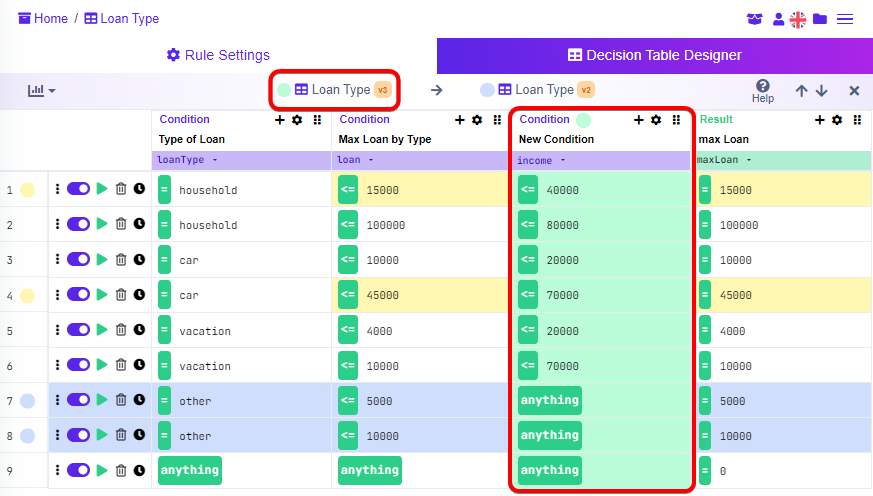
On the other hand, the table I'm comparing with, the Reference Table, is marked in blue. All whole columns or rows which occur only in the Reference table will be marked in blue.
Conversely, the rows that contained the value for loan type "other" will no longer be in the new version of the rule and are colored in blue.
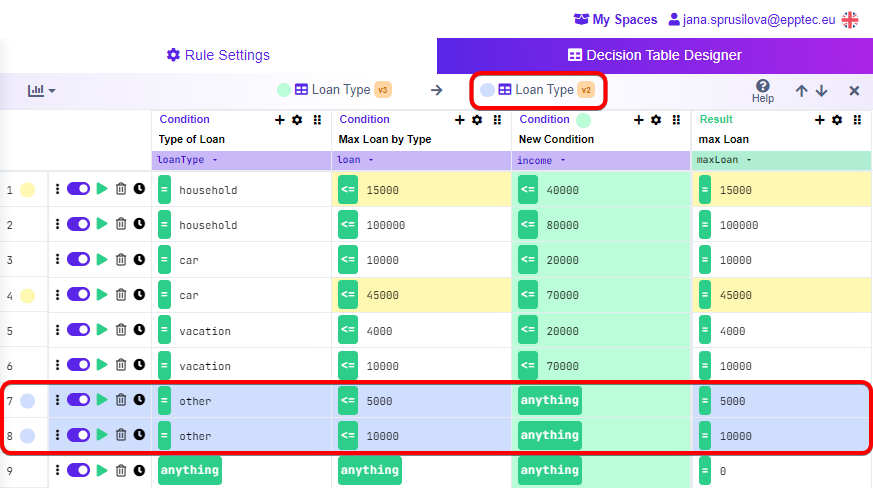
The yellow coloring of some individual cells indicates the differences between the cells of the two decision tables being compared. In our case, these are the previously mentioned changes in the maximum loan amount.
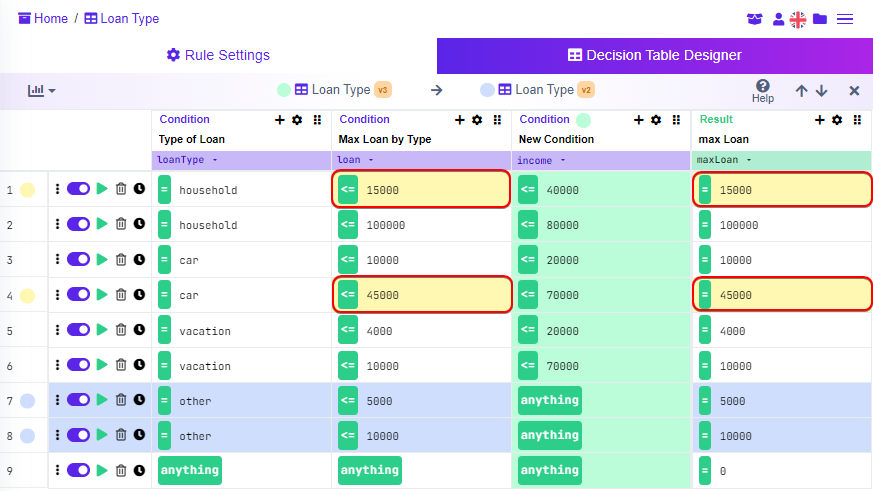
Adjust your table directly in comparison view
Note that, in addition to the color, any different content is indicated by a dot-like badge. You can transfer the values that are only in the Reference Table to the new version simply by clicking on the blue or yellow badge without having to leave your new rule or export the old one and open it in an external tool such as Excel.
.gif)
Key benefits summarized:
- Track the differences between decision tables
- Checking rules and looking for possible errors or missing values (particularly for large rules)
- Migrate values (rows and columns) between tables without the use of any external tools
Thank you for reading 🚀
DecisionRules.io team








